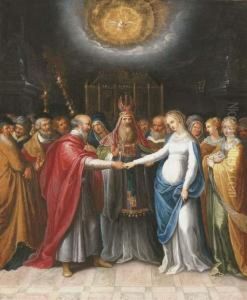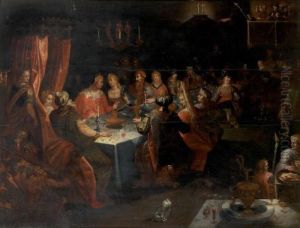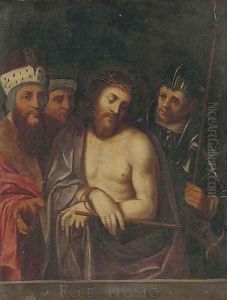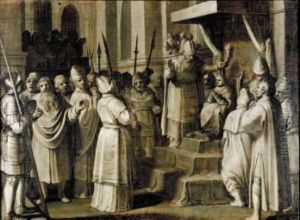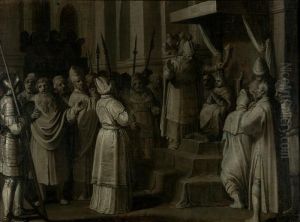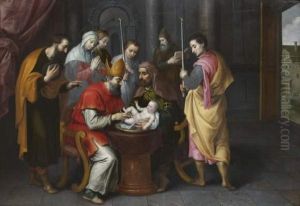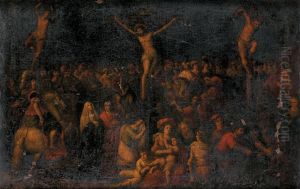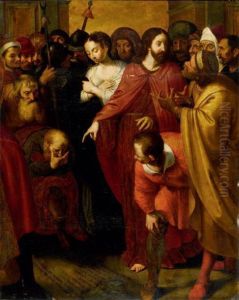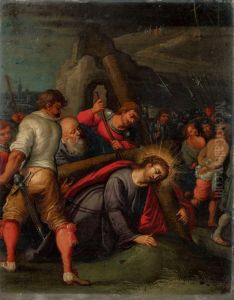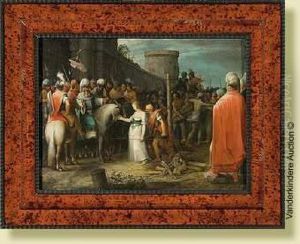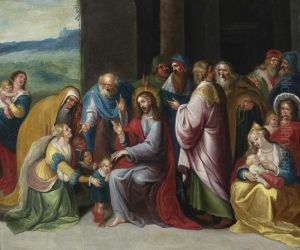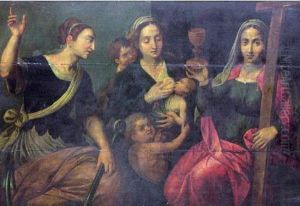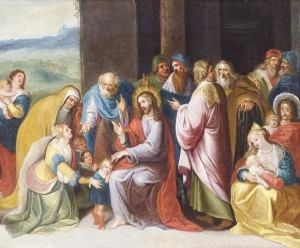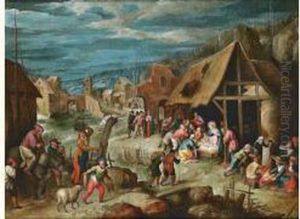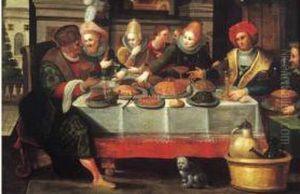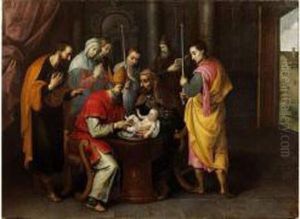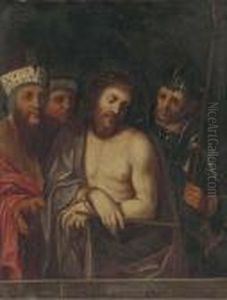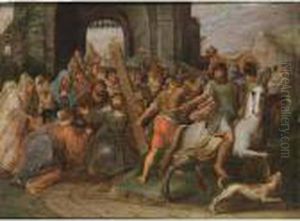Ambrosius Francken II Paintings
Ambrosius Francken II was a prominent Flemish painter, born in Antwerp in 1581 into the well-known Francken family, a dynasty of artists that significantly influenced the Flemish painting tradition in the 16th and 17th centuries. He was the son of Frans Francken I and the brother of Frans Francken II, both of whom were also distinguished painters of their time. This familial environment steeped in artistic tradition no doubt played a crucial role in shaping his career and artistic development.
Ambrosius II is best known for his religious compositions, altarpieces, and history paintings. His work is characterized by a meticulous attention to detail, a vibrant use of color, and dynamic compositions that breathe life into biblical and historical narratives. Despite working in the shadow of his more famous brother, Frans Francken II, Ambrosius carved out his own niche in the Antwerp art scene, contributing to the city's reputation as a thriving center for the arts during the late 16th and early 17th centuries.
His education and training began within his family, under the tutelage of his father, Frans Francken I. Later, Ambrosius II may have traveled or studied under other masters to further hone his skills, although specific details about his education outside the family workshop are scarce. Throughout his career, he remained closely associated with Antwerp, where he was a member of the local Guild of Saint Luke, an association of artists and craftsmen. This affiliation provided him with professional opportunities and connections that were vital for his career.
Ambrosius Francken II's works were highly sought after during his lifetime, and he received commissions from various religious institutions and wealthy patrons. However, despite his success, relatively few of his works have been firmly attributed to him, as his style was quite similar to that of other members of the Francken family, leading to confusion and misattribution among art historians.
He died in Antwerp in 1632, leaving behind a legacy that, while perhaps not as widely recognized as that of his brother or other contemporaries, contributed significantly to the richness and diversity of Flemish painting during the Baroque period. Today, his paintings can be found in museums and collections around the world, where they continue to be studied and admired for their beauty and historical value.
